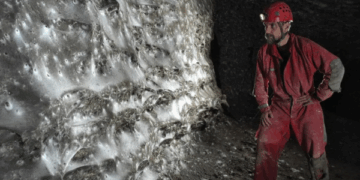A mosaic made by a freed slave to thank God for his release was discovered during the excavation of the 6th-century Church of the Holy Apostles in southern Hatay province.
Mehmet Keleş discovered the Church of the Holy Apostles in an orange grove in the Arpaçiftlik area in 2007. Archaeological digs were launched in the area after Keleş found historical artifacts while planting orange saplings in the grove.
Expert teams established that the place was a church, and its name was the Church of the Holy Apostles, based on the discovery of mosaics, animal figurines, stone burials, and bone remains.
While excavation in the historical church continues, archaeologists have just uncovered a mosaic. A slave thanks God after being freed in the mosaic with a peacock image.
Hatay stands out with its history, nature, and culture, according to Anadolu Agency (AA), and the Arsuz district has played a significant role in history as a port city since the first century A.D., according to Director of Hatay Archaeology Museum Ayşe Ersoy.
Ersoy continued, noting that the Church of the Holy Apostles and its mosaics are significant because they reflect the era in the city between the 6th and 12th centuries:
“Another mosaic area was uncovered during this year’s church excavations. A slave made this mosaic, which depicts peacocks and representations of paradise.”






















